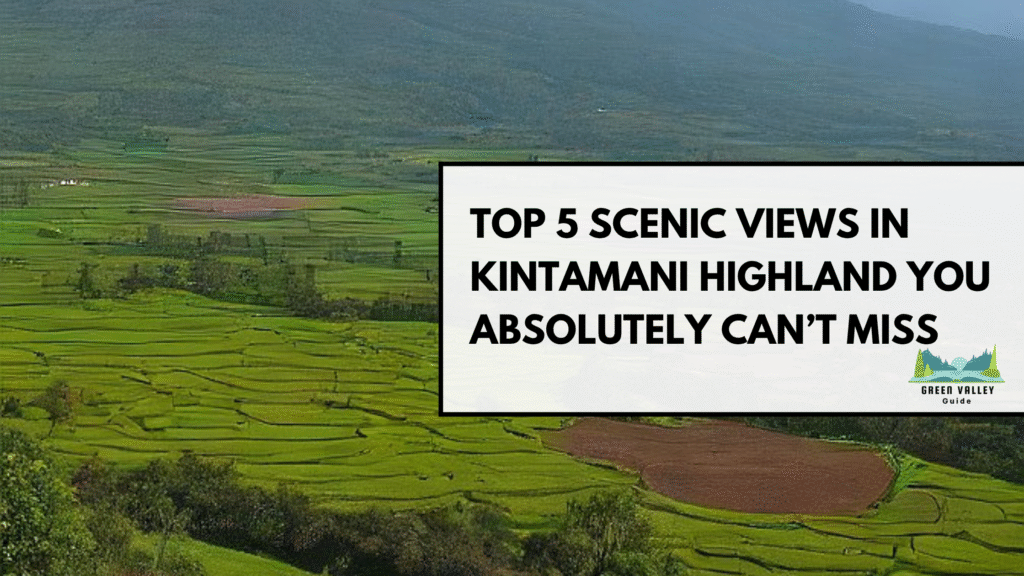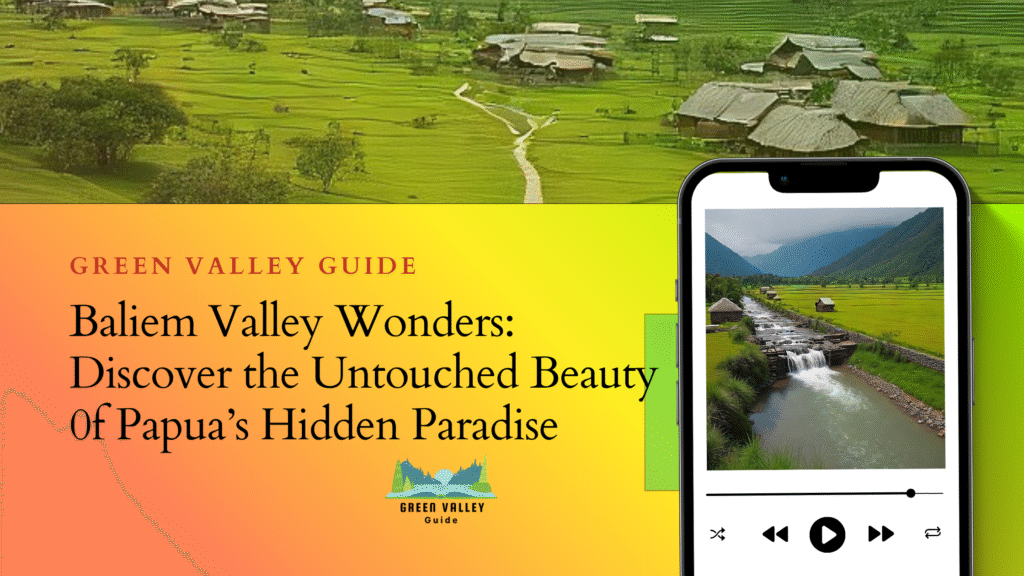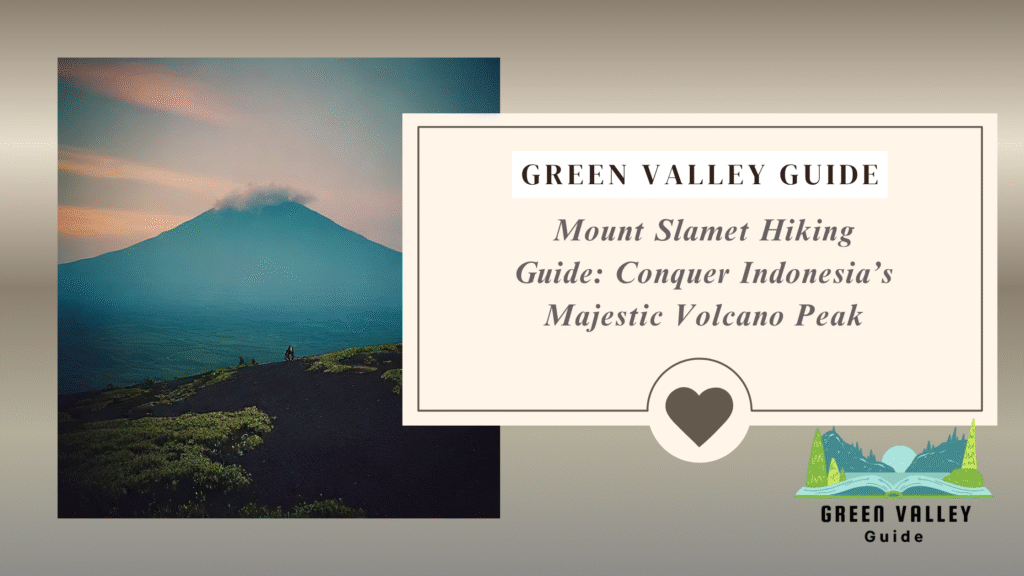Hanalei Valley Lookout: A Breathtaking Hawaiian Gem
Introduction: Discovering the Magic of Hanalei Valley
On the warm North Shore of Kauai, at the headland, is an amazing valley called Hanalei Valley, and time tends to pass slowly. It is one of the most photographed spots in Hawaii due to rolling emerald fields, the winding Hanalei River, and the ridge of misty mountains that appear in the distant background. The scene, the view of people, is at the Hanalei Valley Lookout, reputedly the best view that could have come out of a postcard; full of shimmering waterfalls, lush taro fields, and usually, a rainbow stretching across its sky.
Hanalei Valley is a very one-of-a-kind destination; in this blog post, we will review why it is so special in terms of its natural beauty, origin in terms of culture, when we should visit it, and the DFOs we should see there. Be it a photographer or a nature lover, or just a human being seeking to spend some quiet time in the innermost part of Hawaii, Hanalei Valley is a Zen type in which the visitor can experience the in-depth parts of Hawaii.
Now, let us discuss the magic that Hanalei Valley has that one cannot possibly miss a trip to Kauai.
Where Is Hanalei Valley? Kauaʻi’s Scenic North Shore Treasure
The Hanalei Valley lies at the North Shore of Kauai, nd only a few minutes away is Princeville and the relaxed atmosphere of Hanalei Town. The valley is off 56 highway, and the view of it is breathtaking; thus, a stop is needed when traveling.
It is easy to go there. When you arrive at Lihue Airport, the journey can be an hour by a beautiful and impressive Kuhio Highway down to waterfalls, rough cliffs, and greenery forests. The valley is worlds apart, incredibly accessible, yet it is a quiet, pristine escape to the old meaning of Hawaii.
The Hanalei Valley is an agricultural and cultural environment with active activity compared to other areas of Kauai, where taro still grows old by following traditional methods. It is encircled with lush green, a slow-moving river, and misty mountains in the background, and this is what makes it aesthetically eternal, extremely spiritual.
Hanalei Valley Lookout: What You’ll See From the Top
The scenic points are some of the most recognized and the easiest to access lookouts, one of them being the Hanalei Valley. Here at this wayside, you will see:
- A tapestry of taro swamps of greens and purples
- The slowly weaving Hanalei River passes through the valley
- Lofty mountains, dogged with mists or at least with cascades of water flowing down them
When to go there? Early in the morning, when there is soft golden light and misty drama, or late in the afternoon when there will be warm tones around with a serene atmosphere. Noon has the potential to be sunny and full of guided parties.
Camera technique: You want to get the entire depth of the valley in that picture. A wide-angle lens will do. Seek out natural frames, trees, stone walls, or clouds will give a deeper shot to your image. After a light rain, especially in the afternoon, one can see a rainbow.
Cultural Significance of Hanalei Valley
Tourists need not worry as Hanalei is not only beautiful, but it is also rich in Hawaiian culture and roots. This taro valley served as the cornerstone of Hawaiian life and native Hawaiian farming practices; this area has sustained the introduced taro cultivation throughout the centuries. Most of the families nowadays continue to plant taro here by the use of traditional methods of planting in the wetlands that include the use of transplanted plants.
Hanalei Valley is also full of Hawaiian meant told by the locals of spirits, gods, and nature protectors which inhabits the waters and the land. Such a rich oral history makes the valley have a mystic thing to it, and people coming to visit it are requested to handle it with awe.
Do not “blindly” go anywhere when visiting, but pay attention to signs, sacred zones, and traditions. Having respect for the land and its people will guarantee that this cultural treasure will remain alive into future generations.
Exploring the Valley Below: What’s Accessible to Visitors
What we see as Hanalei Valley is mostly privately owned or, rather, farm-friendly, but sections of it can be explored carefully:
- There are some local guided tours that give explanations on taro farming, Hawaiian ideals, and the valley ecology.
- Not all eco-education programs and cultural experiences would be perceived as polite by guests who want to learn about the conservation technique.
With that being said, not all areas are at liberty to everyone. Stay out, and do not explore the valley unchaperoned or without permission. In addition, avoid flood flows and soft ground surfaces, particularly during wet spells.
And once the lookout is given, it can be a remarkable experience, and, provided you also are inquisitive and considerate, you can proceed some distance into the history of the valley, but be careful how alone you go.
Nearby Attractions Around Hanalei Valley
When you go to Hanalei Valley, it is not done without looking into the treasures of the surrounding North Shore. Within a few minutes of the lookout, you will find:
- Hanalei Town – Hanalei is a lovely small town with many galleries of local artists, shops, stores, and restaurants. An ideal location for chilling on the island and having a fresh smoothie or poke bowl.
- Hanalei Bay – One of the most beautiful beaches offered by Hawaii, which is great to swim to paddleboard, or go for a sunset walk. It is a nice place to rest after enjoying the panoramas of mountains and its chilly, quiet waters.
- North Shore gems – Don’t miss:
- Limahuli Garden and Preserve of Hawaiian indigenous flora and sea views
- The Lumahaʻi Beach is a dramatic, less crowded location, famous due to the old Hollywood movies
- Kilauea Lighthouse, a bird sanctuary and has beautiful coastal views and a sight of the seabirds
All of them enrich your Hanalei experience, culture, cuisine, and the seaside beauty.
When to Visit Hanalei Valley for the Best Experience
Time is nature when it comes to viewing Hanalei Valley at its best. Take into consideration this:
- Seasonal ideas Kaua ʻi is infamous for rain, more so in the North Shore. The wetter months are winter (November to March), when the scenery is lush and waterfalls pour, but there is a chance of fog and road blockage. Clearer skies and more stable access to the trails may be found in the summer (April-October).
- Hour of day considerations – Early in the morning is the best time of day when there is soft mist and fewer people around. Late afternoon (golden hour) is the best since this is the time of the day that gives warm tones to give the taro fields lots of life during photo time.
- For the tour buses and day-trippers, the mid-morning arrival is the rule. You will find peace, no one talking, and easier parking along KUHIU Highway after 4 PM or before 9 AM.
What to Bring for a Visit to Hanalei Valley Lookout
Although the Hanalei Valley lookout is a quick visit, it is good to plan ahead to make the visit enjoyable. And just to get things straight:
- A smartphone with camera camera or even a smartphone is a dream for the photographer with panoramic views and ever-changing light.
- Reusable water bottle- you will need to be hydrated, as you might do something like visit beaches or go hiking around the area.
- Hat and sunglasses- the sun may be very intense even on the cooler days.
- Light rain jacket or umbrella- Mists and short rain are frequent throughout the year.
- Comfortable footwear- To take impulsive walks or short walks around the area.
You need a snack or caffeine? Drop by a coffee shop around the local area, like in Princeville or Hanalei Town, where most offer homegrown coffee and locally churned delights.
Respect the Land: Responsible Travel in Hanalei Valley
Hanalei is not eye candy, but it is a cultural and agricultural living landscape. This is how to visit in a good way:
- Use official vantage points only – Do not enter into the property or agricultural land of the valley below.
- Leave no marks (Bring your rubbish away and do not bother local flora and fauna).
- Buy Local: Eat at family-owned restaurants, book a Hawaiian-owned farm tour, and purchase crafts in Hanalei Town, among others.
- Learn, listen, and read signage as well as local advice, and take time to understand the cultural meaning of the land.
Mindfulness helps you enjoy the moment more, thus helping the beauty that you find in the valley to last throughout generations.
Conclusion: Why Hanalei Valley Is a Must-See in Kauaʻi
As soon as you get outside at the Hanalei Valley Lookout, you will realize why this place is one of the most renowned and favorite sights in Kauai. The quiltwork of the rich Taro farms, hazy mountains, and snaking river Hanalei becomes a living work of art about nature, culture, and tradition.
Be it through photography, education of the Hawaiian heritage of the valley, or just by appreciating the scenery you find at Hanalei Valley, you can get something that is quiet but nonetheless something potent about what exactly is so special about the Garden Isle.
Don’t be in a hurry. Get your photographs. But above all (most important): Be careful.
Let the beauty of Hanalei be an eye-opener to you concerning Hawai’i, and be guided by the idea of making any journey with purpose and humility.
FAQs About Hanalei Valley
Q1: Can one hike Hanalei Valley, or is it only a viewing place?
The valley is mostly privately owned or conservation farm country, so one cannot just go hiking there generally. Nonetheless, the Hanalei Valley Lookout is free and open to everyone-it presents panoramic photo-taking material without having to get off the highway.
Q2: How can one find the Hanalei Valley Lookout?
The lookout is located just off K 56 or K 56 of the highway, which is between Princeville and Hanalei town. Find a small parking space by the side of the road that has a view and some information signs.
Q3: Are Taro farms in Hanalei Valley open?
Cultural or agricultural tours are available in some of the local farms, which may require a reservation. Even during low season, it is always good to reserve in advance, and know that most of the valley is privately owned- stay within the boundaries and above all buy local where you can.





